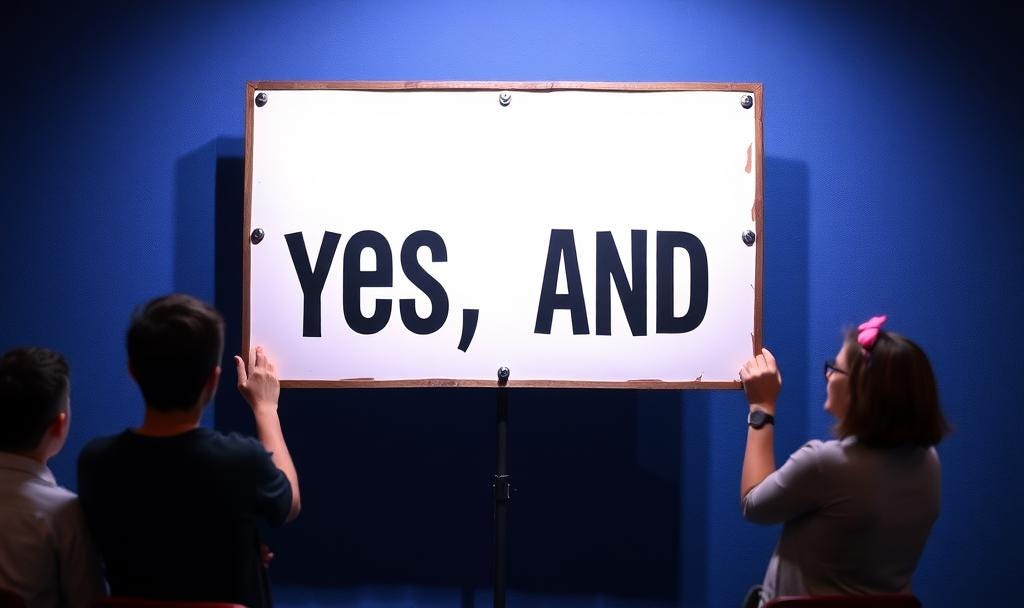[The Backstory]
When I was in graduate school, I attended a networking event the university hosted. It was a “cracker barrel” with six tables, each with speakers/topics, and everyone moved to a different table every fifteen minutes when a bell rang. One table was hosted by the training and development team from The Second City, the famous improv comedy organization. They did a brief workshop about the power of “yes, and…”. The activity involved each person making a statement and the next person responding by accepting it ("yes") and building on it ("and") to collaborate. The word “no” wasn’t allowed.
Since it was a Chicagoland Society for Performance Improvement event, we were all improvising as performance improvement experts, given an organizational issue. Our objective was to hypothesize causes and create solutions to resolve the issue. We took part in two quick-fire “yes, and…” role plays hypothesizing our problem’s causes and possible solutions while the facilitator captured our thoughts on a small whiteboard.
Afterwards, the facilitator asked the group what to do next, based on the compiled lists. The lists piqued the group’s interest. We were performance improvement professionals, after all. We shared a couple of connections and ideas before time ran out. The activity was perfectly designed. It got us into the objective almost immediately and had us wanting more in just fifteen minutes time.
The point of that “yes, and…” activity was that, when adults feel welcome and safe to share, groups can gain more diverse insight to make better decisions. Diverse perspectives offer value. More than one thing can be true at once. These powerful messages surprised me, given they were from a fifteen-minute activity at a college networking event. I was not expecting that.
[yes, ampersand]
Fast forward to today. I work to embody the spirit of that activity as much as I can. I named my Substack after the “yes, and” exercise. I work to acknowledge that more than one thing can be true.
Trauma and the body’s reaction to it cause a natural desire for the binary. When our body feels a threat, choosing from two options is easier and faster than considering nuanced perspectives. We can make our choices more quickly. Trauma thrives in a binary world of right and wrong, good and bad, black and white.
Trauma, like a ball of energy, thrives in the binary. Nuance slows it down. Trauma doesn’t like nuance. As a late-diagnosed autistic with ADHD, I’m using nuance to fight against traumatic systems. I’m acknowledging truths. On this Substack, I’m writing all about it.
If you’re curious, check out my posts. Maybe you’re a fan of nuance too. We can “yes, and” together. That title was my preference, but it was already in use. Because “yes, and” was unavailable, I think “yes, ampersand” will work well. I love an ampersand. The symbol. I’m considering it for a small tattoo. What do you think?
[Dive In]
Get your bearings. Check out everything you need to understand what happens here.
Get to know me. If you’re curious about what I do, check out my bio.
Get to reading! Check out the list of series with descriptions.
[Stay Up-to-Date]
Never miss an update—every new post is sent directly to your email inbox.
[Participate]
Be part of a community of people who share your interests. Participate in the comments section, or support this work with a subscription.
To learn more about the tech platform that powers this publication, visit Substack.com.




